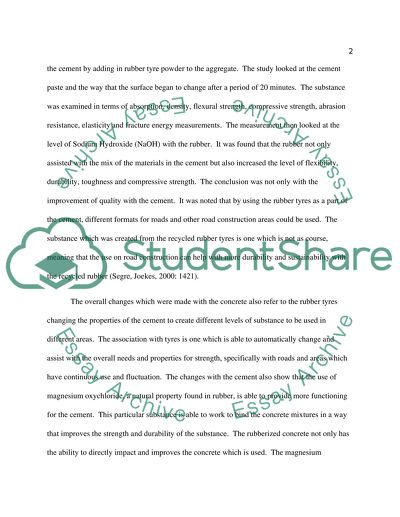Cite this document
(“Recycled Rubber Tyres as Aggregate in Concrete Essay”, n.d.)
Retrieved from https://studentshare.org/engineering-and-construction/1394594-recycled-rubber-tyres-as-aggregate-in-concrete
Retrieved from https://studentshare.org/engineering-and-construction/1394594-recycled-rubber-tyres-as-aggregate-in-concrete
(Recycled Rubber Tyres As Aggregate in Concrete Essay)
https://studentshare.org/engineering-and-construction/1394594-recycled-rubber-tyres-as-aggregate-in-concrete.
https://studentshare.org/engineering-and-construction/1394594-recycled-rubber-tyres-as-aggregate-in-concrete.
“Recycled Rubber Tyres As Aggregate in Concrete Essay”, n.d. https://studentshare.org/engineering-and-construction/1394594-recycled-rubber-tyres-as-aggregate-in-concrete.


